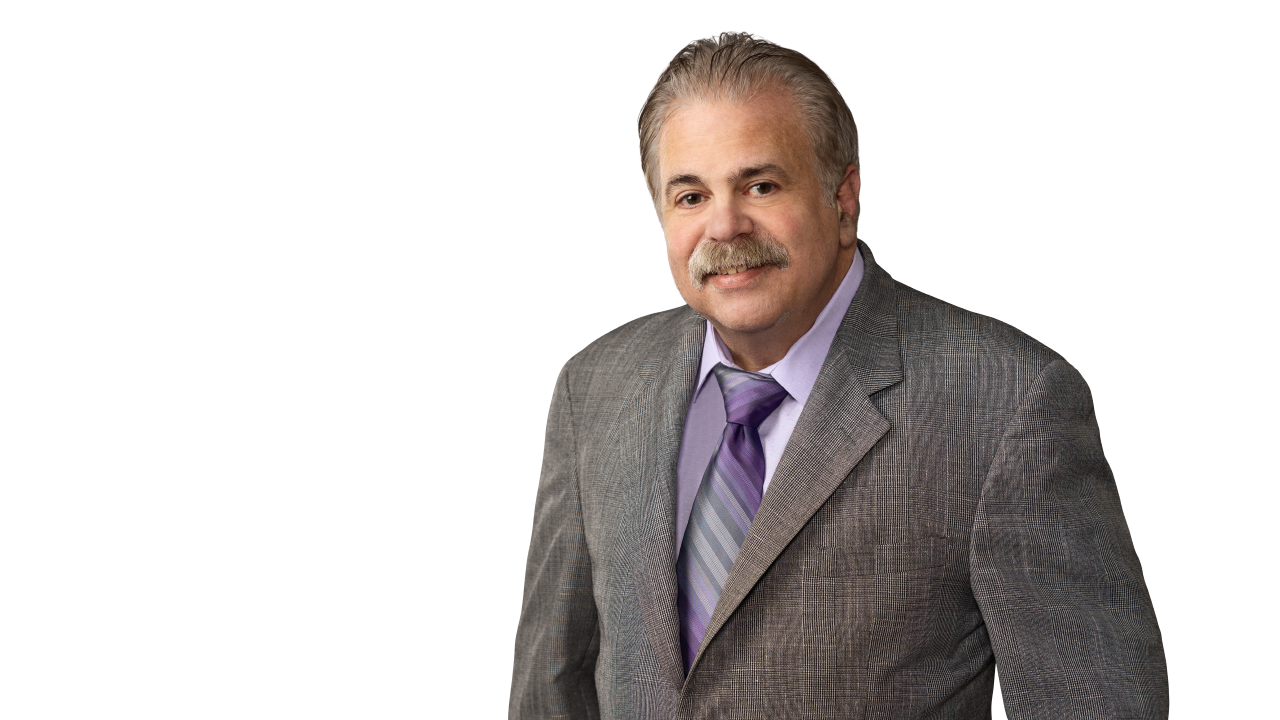How Several U.S. Supreme Court Cases This Term Will Significantly Impact Insurers
Insights for Insurers Alert | 7 min read
Mar 28, 2024
Insurers are impacted in many ways by the United States (U.S.) Supreme Court decisions, but very rarely does the Supreme Court wade into decisions directly involving insurance contracts or the rights of insurers. This term, the Supreme Court has had several cases on its docket that affect insurers directly.
Great Lakes Ins. SE v. Raiders Retreat Realty Co. LLC
Last month, the U.S. Supreme Court upheld the validity of a choice-of-law provision in a maritime insurance contract in Great Lakes Ins. SE v. Raiders Retreat Realty Co. LLC , 601 U.S. (Feb. 21, 2024). In this case, the parties' contract contains a choice-of-law provision that provides New York law with the ability to govern any future disputes. The District Court for the Eastern District of Pennsylvania enforced the choice-of-law provision in the parties' contract and rejected Raiders' contention that Pennsylvania law should control. The Third Circuit recognized the presumptive validity and enforceability of choice-of-law provisions in maritime contracts but held that presumption must yield to a strong public policy of the State where a suit is brought. The Third Circuit remanded the case for the District Court to consider whether applying New York law would violate Pennsylvania's public policy regarding insurance.
Justice Kavanaugh, writing for a unanimous court, recognized that choice-of-law provisions in maritime contracts are presumptively enforceable, as are forum-selection clauses. The presumption of enforceability of choice-of-law provisions in maritime contracts facilitates maritime commerce by reducing uncertainty, lowering costs, discouraging forum shopping, guiding party conduct, reducing the price, and expanding the availability of marine insurance. Choice-of-law provisions may be disregarded only where the chosen law contradicts a federal statute, conflicts with an established federal maritime policy, or where there is "no reasonable basis" for the selection of the chosen law. The Court rejected the policyholder's invitation to create a new exception to the presumption of validity where the provision would contradict the fundamental policy of the State with the greatest interest in the dispute, noting it would undermine the presumption of enforceability and promote disuniformity and uncertainty.
Truck Insurance Exchange v. Kaiser Gypsum Co. Inc.
The Supreme Court heard arguments in the Truck Insurance Exchange case, where it is considering an insurer's standing to object to Kaiser Gypsum's Chapter 11 reorganization plan.
In this case, the insurer alleges that the debtor colluded with representatives for asbestos claimants to propose and confirm a plan that includes fraud-prevention measures only for uninsured asbestos claims. The insurer will bear the financial burden of those 14,000 insured claims that are not subject to fraud prevention measures.
I spoke to Bloomberg Law's Evan Ochsner for his article "Insurers Take on Victim Payouts in Supreme Court Bankruptcy Case." Evan quoted me on the Truck Insurance Exchange case, stating, "As the party who must pay, it seems reasonable to conclude that the insurer does have standing, that it is a 'party in interest,' and that it should be afforded a meaningful opportunity to be heard."
Read the full Bloomberg Law article (subscription required).
I note that policyholder bankruptcies can impact or impair insurers' rights in various ways. One way that bankruptcy courts have attempted to protect insurers to some extent–and attempt to deny insurers the right to be heard on all issues as a party in interest is entitled to do in bankruptcy proceedings and challenge a plan of reorganization–is to include "insurance neutrality" provisions in the plan. These provisions–some better than others–essentially provide that nothing in the plan of reorganization is intended to alter the parties' rights under the insurance contracts. These provisions can provide a measure of protection to insurers depending upon the plan, the bankruptcy, and the issue.
Mass tort bankruptcies, such as asbestos claims and sexual molestation, have produced rampant fraud and contributed greatly to social inflation in the tort system by, among other things, seeking inflated recoveries and suppressing evidence of claims against and recoveries from other defendants. For years, I have observed the plaintiffs' bar being used in a special section of the U.S. Bankruptcy Code, 11 U.S.C. § 524(g), to drain resources from insurers and their policyholders. Courts have been called upon to impose anti-fraud and abuse measures to limit these violations.
It is important to keep in mind that a consensual plan of reorganization changes the dynamics of bodily injury claims resolution. Instead of policyholders and insurers having a common interest in defending against claims and limiting exposure from those claims, the policyholders effectively hand the keys to their store over to asbestos plaintiff representatives and lawyers to recover as they wish in accordance with trust distribution procedures of various types. This may be acceptable when the procedures are fair and vibrant and where the parties that will pay the claims (often the insurers) have a meaningful say in the provisions and their enforcement.
I believe that plaintiffs have little incentive to minimize fraud, disclose other recoveries, and limit recoveries. Precluding insurers that do not agree to the plan or that seek to interpose objections or have input to root out fraud, unfairness, and abuse adversely impacts the insurers' interests in a direct and significant way.
In the Truck Exchange case, the insurer alleges that the debtor colluded with representatives for asbestos claimants to propose and confirm a plan that includes fraud-prevention measures only for uninsured asbestos claims—not insured asbestos claims. It is the insurer that bears the financial burden of those 14,000 insured claims not subject to the fraud-prevention measures. As the party who must pay, it seems reasonable to conclude that the insurer does have standing, that it is a "party in interest," and that it should be afforded a meaningful opportunity to be heard. Further, eliminating the party with the financial incentive to raise issues from the equation may undermine the integrity of the bankruptcy process.
Shane Dilworth of Business Insurance provided wrap-up coverage of the Supreme Court arguments. In this article, I am quoted as saying:
"The justices seemed to recognize that the concept of [the] party in interest was broad and that the insurer's initial status as [the] creditor, based upon deductibles it was owed, as well as being party to executory contracts with the debtor, i.e., the insurance policies, made it a party in interest under the bankruptcy code […]."
He noted my views that the justices' ruling would likely have a significant impact on bankruptcy actions involving insurers and silencing or excluding insurers that do not agree to the plan or that wish to interpose objections or have input to root out fraud, unfairness, and abuse adversely impacts the insurers and their interests in a direct and significant way.
I believe that the split between the Third Circuit on the one hand and the Fourth and Seventh Circuits on the other (along with cases taking different approaches within the Ninth Circuit) likely drove the Supreme Court to grant the petition for cert in this case.
Predicting how the U.S. Supreme Court based upon oral argument can be a risky business, but the justices seemed supportive of the insurer's position that it is a party interest. The justices appeared to recognize that the concept of the party in interest was broad and that the insurer's initial status as the creditor (based upon deductibles it was owed) as well as being party to executory contracts with the debtor (the insurance policies) made it a party in interest under the bankruptcy code.
Harrington v. Purdue Pharma
In December 2023, the Supreme Court also heard oral arguments in the Purdue Pharma bankruptcy case involving a plan to resolve opioid claims against the manufacturer of OxyContin. The issue in that case concerns the validity of a third-party release, which favors the Sackler family, which owned the company.
The Sackler family did not file for bankruptcy protection individually but committed to paying up to $6 billion under the plan and to giving up ownership in the company in order to obtain releases. The validity of such third-party releases in the context of bankruptcies is subject to conflicting lower-court rulings. Thus, mass tort bankruptcies are subject to two cases before the U.S. Supreme Court this term. Although this decision may not directly impact insurers, it may impact them indirectly in other cases.
The Scope Of Channeling Injunction Protection
One of the main advantages to debtors and insurers with Chapter 11 plans involving mass tort liabilities is the protection from suit by existing and future claimants through a channeling injunction.
Earlier this month, a Delaware federal bankruptcy judge ruled that a sexual abuse victim can proceed with his suit seeking $120 million from three insurers of the Boy Scouts of America, finding he was not provided with adequate notice of an injunction barring suits against certain insurers. According to the court, the claimant knew the Boy Scouts of America's bankruptcy petition filing but was not provided with actual notice of a confirmation hearing or the entry of an insurance entity injunction. The case stands a long way from the U.S. Supreme Court, but unless the dispute is resolved, the ruling is likely to be appealed.
Media Coverage
- "Oral arguments on insurers' rights during bankruptcy intrigue experts" was published by Business Insurance on March 25, 2024.
- "Insurers Take on Victim Payouts in Supreme Court Bankruptcy Case" was published by Bloomberg Law on March 16, 2024.
Featured Insights

Press Release
Jan 6, 2026
Hinshaw Adds Four-Member Consumer Financial Services Team in DC and Florida

Employment Law Observer
Dec 8, 2025
12 Days of California Labor and Employment: 2025 Year in Review

Press Release
Dec 4, 2025
Hinshaw Recognized by the Leadership Council for Legal Diversity as a 2025 Top Performer

Press Release
Nov 25, 2025
Hinshaw Legal Team Secures Summary Judgment in Gas Station Injury Case

Press Release
Nov 18, 2025
Hinshaw Releases the Third Edition of Duty to Defend: A Fifty-State Survey

In The News
Nov 13, 2025
A Profile on Neil Rollnick: After 57 Years in Practice, He Has No Plans to Retire








